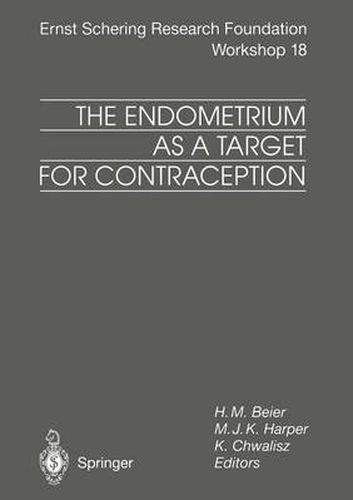Readings Newsletter
Become a Readings Member to make your shopping experience even easier.
Sign in or sign up for free!
You’re not far away from qualifying for FREE standard shipping within Australia
You’ve qualified for FREE standard shipping within Australia
The cart is loading…






This title is printed to order. This book may have been self-published. If so, we cannot guarantee the quality of the content. In the main most books will have gone through the editing process however some may not. We therefore suggest that you be aware of this before ordering this book. If in doubt check either the author or publisher’s details as we are unable to accept any returns unless they are faulty. Please contact us if you have any questions.
Progesterone, the hormone pro gestationem , plays a pivotal role in mammalian reproduction during almost all phases of the menstrual cyc1e and all stages of pregnancy. It is involved in the control of ovula- tion, prepares the endometrium for implantation, and, in later stages of pregnancy, is responsible for its maintenance by suppressing uterine contractility. The sudden withdrawal of progesterone action at the end of the nonfertile cycle leads to the constriction of spiral arteries and, in . turn, to menstruation in human beings and non human primates. The decrease in serum progesterone concentrations or its functional with- drawal in the myometrium and decidua are the most important events during parturition in various mammals. In the uterus, progesterone controls the growth and differentiation of endometrial and myometrial cells and regulates a variety of cell functions directly by either stimulating or inhibiting structural and functional proteins, but also indirectly by functionally opposing estra- diol action. In the nonpregnant uterus, there are different progesterone effects on uterine cell proliferation which vary among species. In the fertile cyc1e, progesterone regulates in synergism with estradiol the transport of the fertilized eggs and the c1eavage stage embryos through the oviduct and induces the secretory changes in the endometrium re- quired for implantation. During the period between ovulation and im- plantation, remarkable morphological and biochemical changes in the lumenal and glandular epithelial cells take pi ace under the influence of rising progesterone levels in the human and primate endometrium.
$9.00 standard shipping within Australia
FREE standard shipping within Australia for orders over $100.00
Express & International shipping calculated at checkout
This title is printed to order. This book may have been self-published. If so, we cannot guarantee the quality of the content. In the main most books will have gone through the editing process however some may not. We therefore suggest that you be aware of this before ordering this book. If in doubt check either the author or publisher’s details as we are unable to accept any returns unless they are faulty. Please contact us if you have any questions.
Progesterone, the hormone pro gestationem , plays a pivotal role in mammalian reproduction during almost all phases of the menstrual cyc1e and all stages of pregnancy. It is involved in the control of ovula- tion, prepares the endometrium for implantation, and, in later stages of pregnancy, is responsible for its maintenance by suppressing uterine contractility. The sudden withdrawal of progesterone action at the end of the nonfertile cycle leads to the constriction of spiral arteries and, in . turn, to menstruation in human beings and non human primates. The decrease in serum progesterone concentrations or its functional with- drawal in the myometrium and decidua are the most important events during parturition in various mammals. In the uterus, progesterone controls the growth and differentiation of endometrial and myometrial cells and regulates a variety of cell functions directly by either stimulating or inhibiting structural and functional proteins, but also indirectly by functionally opposing estra- diol action. In the nonpregnant uterus, there are different progesterone effects on uterine cell proliferation which vary among species. In the fertile cyc1e, progesterone regulates in synergism with estradiol the transport of the fertilized eggs and the c1eavage stage embryos through the oviduct and induces the secretory changes in the endometrium re- quired for implantation. During the period between ovulation and im- plantation, remarkable morphological and biochemical changes in the lumenal and glandular epithelial cells take pi ace under the influence of rising progesterone levels in the human and primate endometrium.